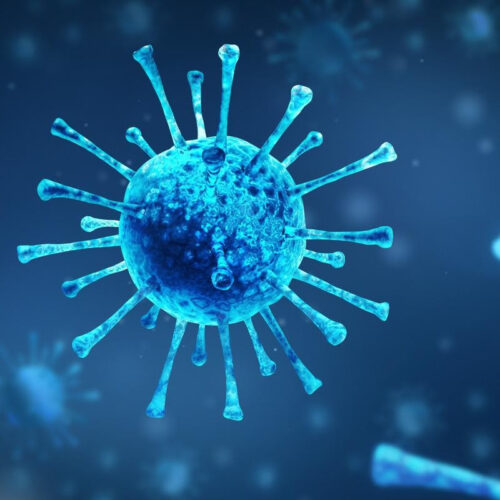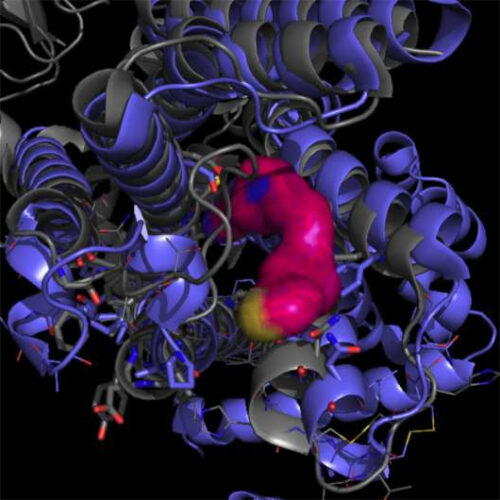VANDERBILT UNIVERSITY MEDICAL CENTER IMAGE: JENNIFER “PIPER” BELOW, ASSOCIATE PROFESSOR OF MEDICINE AT VANDERBILT UNIVERSITY MEDICAL CENTER. CREDIT: VANDERBILT UNIVERSITY MEDICAL CENTER More than 2.5 million Americans have a chronic condition arising in early childhood that can negatively impact their education, job performance, and employability well into adulthood. There is no known cure, and existing...
Human parasite’s daily rhythms could be targeted for better treatments
The parasitic worm that causes the neglected tropical disease, schistosomiasis, has daily rhythms in gene expression, including genes that could be targeted in drug development. For the first time, the worm that causes schistosomiasis has been shown to have a daily rhythm that impacts which genes are switched on at different times. The new research,...
Breaking the chain that culminates in cancer
In a line of dominos, if you take out a single piece, the last one will never fall. Similarly, a lot of pieces have to line up and be pushed at the same time in a cell to result in cancer. Twenty-two years ago, Cold Spring Harbor Laboratory (CSHL) Professor Alea Mills discovered the protein p63. More...
On the Ability of Redundant Blood Vessels to Lower Cardiovascular Mortality
A few strategies offer the possibility of growing additional redundant blood vessels, though this is far from rigorously proven. Intermittently provoking hematopoietic stem cells to leave the bone marrow via CXCL12 upregulation, for example. Humans are not completely uniform in their major blood vessel networks, there are variant populations with more redundancy. The value of that greater redundancy is...
Scientists edge closer to probe that would inspect atherosclerotic plaques by forcing molecules to sound their presence
Skoltech researchers and their colleagues have come one step closer to a working optoacoustic endoscopic probe — a device that could slip inside a blood vessel and analyze atherosclerotic plaques by shining laser light on them to make them wobble like a loudspeaker membrane and betray their chemical composition with an ultrasound signature. This could prove...
Novel peptide-antibody fusion molecule enhances SARS-CoV-2 variant neutralization
By Dr. Liji Thomas, MD Dec 3 2021Reviewed by Aimee Molineux The ongoing coronavirus disease 2019 (COVID-19) pandemic, caused by the severe acute respiratory syndrome coronavirus 2 (SARS-CoV-2), has not responded as hoped to the vaccines developed at “warp speed” within a year of its emergence, mostly because of the viral variants of concern that have...
DEEP BREATH VIDEO CAN CALM A CHILD IN 1 MINUTE – pediatrics – clinical practice
It’s one of the first things parents and teachers tell a child who gets upset: “Take a deep breath.” But research into the effect of deep breathing on the body’s stress response has overwhelmingly ignored young children—and studies done with adults typically take place in a university lab, making them even less applicable to children’s actual...
You actually can teach an old dog new tricks, which is why many of us keep learning after retirement
by Darryl Dymock, The Conversation Credit: Shutterstock Lorna Prendergast was 90 years old when she graduated with a master’s degree from the University of Melbourne in 2019. She said her message to others was, “You’re never too old to dream.” Nor, obviously, too old to learn. In the same year 94-year-old David Bottomley became the oldest...
Drug compound makes pancreatic cancer cells more vulnerable to chemo
by Washington University School of Medicine Researchers at Washington University School of Medicine in St. Louis have identified a drug compound that makes pancreatic cancer cells more vulnerable to chemotherapy. While chemotherapy alone (left panel) can cause some degree of pancreatic cancer cell death, the addition of the compound ATI-450 enhances the effect of chemotherapy...
Compound shows promise for minimizing erratic movements in Parkinson’s patients
by Texas Biomedical Research Institute The small molecule PD13R (magenta) interacting with the dopamine D3 (grey) and D2 (purple) receptors cryo-EM structures, as predicted by RhodiumTM. Credit: SwRI A new study from Texas Biomedical Research Institute (Texas Biomed) and collaborators has identified a promising drug candidate to minimize uncontrolled, erratic muscle movements, called dyskinesia, associated...





